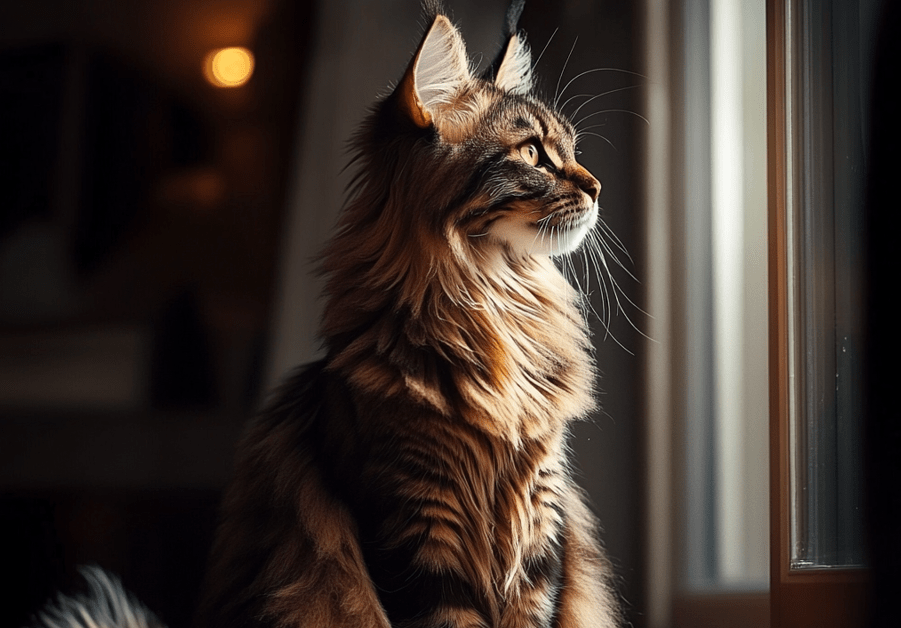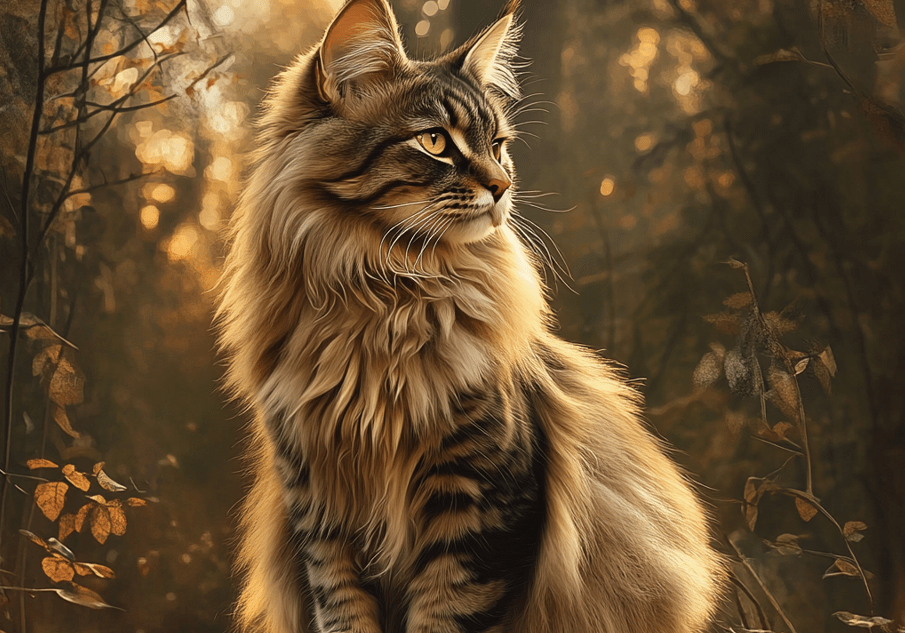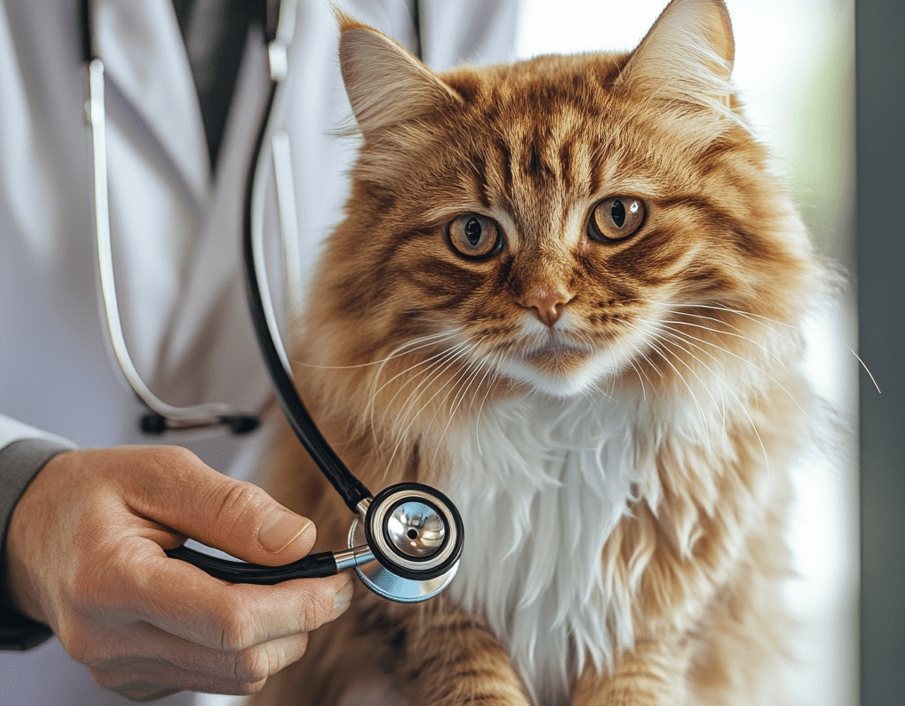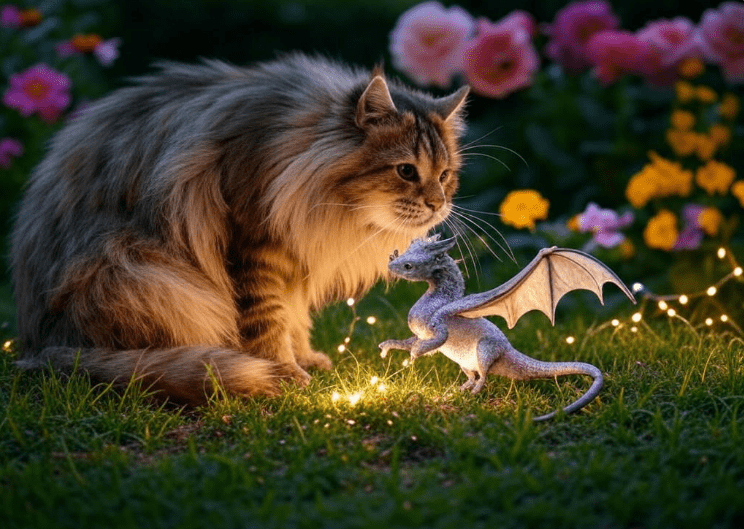
Maine Coon dandruff is a common concern for owners of this majestic, long-haired breed. These gentle giants, known for their luxurious coats and friendly personalities, can sometimes suffer from dry skin and flaky dandruff, leading to discomfort and an unkempt appearance. If you’ve noticed white flakes in your Maine Coon’s fur or excessive scratching, you’re not alone. This comprehensive guide explores the causes, symptoms, and solutions for managing Maine Coon dandruff and dry skin, ensuring your feline friend stays healthy, comfortable, and looking their best.
Understanding Maine Coon Dandruff
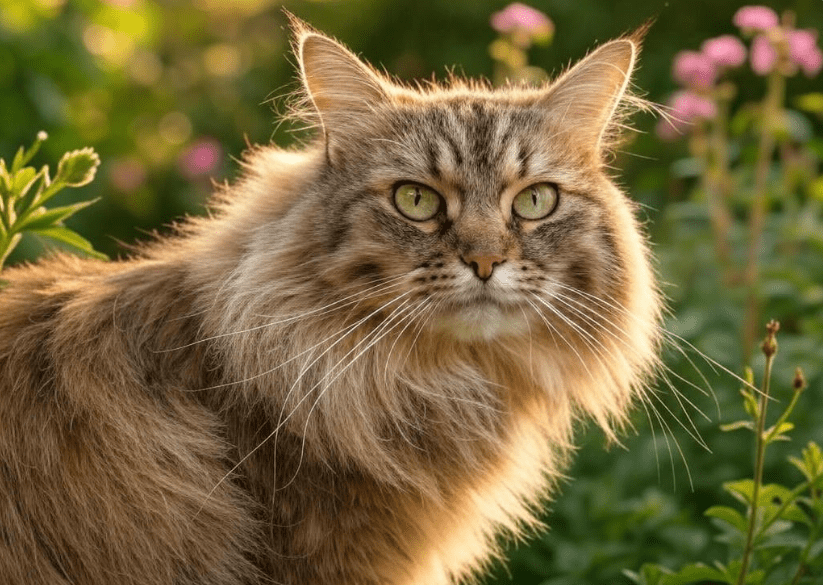
Maine Coon dandruff appears as white or grayish flakes in your cat’s fur, often accompanied by dry, itchy skin. Unlike human dandruff, which is primarily cosmetic, dandruff in Maine Coons can signal underlying health or environmental issues. Their thick, water-repellent coats make them prone to skin conditions if not properly cared for. Addressing dandruff early is crucial to prevent discomfort and potential complications like skin infections.
Why Maine Coons Are Prone to Dandruff
Maine Coons have unique coats that require specific care. Their fur consists of a dense undercoat and longer guard hairs, which can trap oils, dirt, and dead skin cells. Several factors contribute to dandruff in Maine Coons:
Dry Environment: Low humidity, especially in winter, can dry out your cat’s skin.
Poor Grooming: Inadequate brushing or improper bathing techniques can lead to oil buildup and flaking.
Dietary Deficiencies: A lack of essential fatty acids, like omega-3s, can cause dry, flaky skin.
Allergies: Food or environmental allergens may trigger skin irritation and dandruff.
Parasites: Fleas, mites, or lice can cause itching and flaking.
Medical Conditions: Hormonal imbalances, fungal infections, or seborrhea can lead to dandruff.
Understanding these causes helps you tailor solutions to your Maine Coon’s needs.
Symptoms of Maine Coon Dandruff and Dry Skin
Recognizing the signs of dandruff and dry skin is the first step to addressing the issue. Common symptoms include:
White or Gray Flakes: Visible in the fur, especially after brushing or petting.
Itching and Scratching: Excessive scratching or grooming may indicate discomfort.
Dull or Brittle Coat: The fur may lose its natural sheen and feel coarse.
Red or Irritated Skin: Visible when parting the fur, sometimes with scabs or sores.
Odor: A musty or oily smell may develop in severe cases.
If your Maine Coon shows these signs, it’s time to investigate and take action.
Step-by-Step Solutions for Managing Maine Coon Dandruff
Managing Maine Coon dandruff involves a combination of proper grooming, dietary adjustments, environmental changes, and, if necessary, veterinary intervention. Below are actionable steps to help your cat achieve a healthy coat and skin.
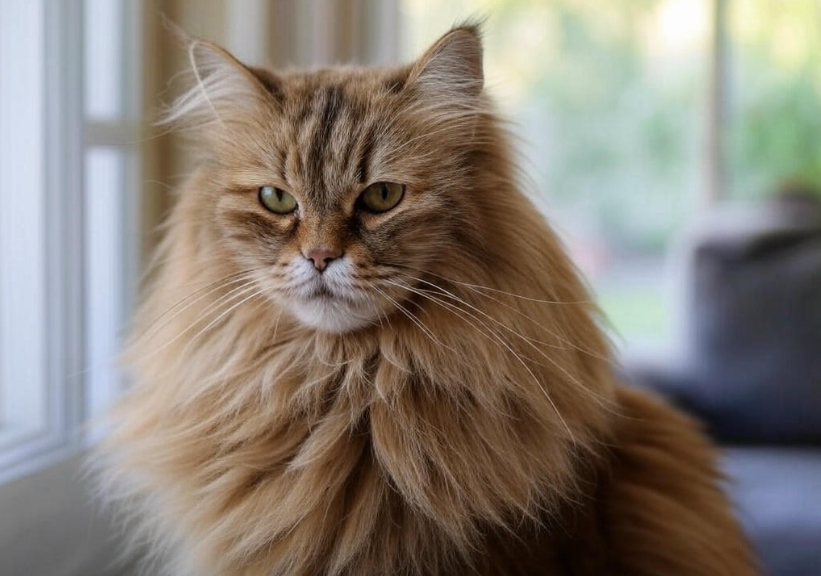
1. Optimize Grooming Practices
Regular grooming is essential for Maine Coons to prevent dandruff and maintain coat health. Their thick fur requires consistent care to distribute natural oils and remove dead skin cells.
Brush Regularly: Use a high-quality cat brush, like a slicker or pin brush, 3–4 times a week. Focus on areas prone to matting, such as the belly and hindquarters. Brushing stimulates the skin and reduces flaking.
Use the Right Tools: A de-shedding tool, like the FURminator, can help remove loose undercoat without damaging the topcoat. Avoid overusing, as it may irritate sensitive skin.
Bathe Sparingly: Overbathing can strip natural oils, worsening dry skin. Bathe your Maine Coon every 4–6 weeks using a cat-safe, moisturizing shampoo formulated for sensitive skin. Look for products with oatmeal, aloe vera, or chamomile.
Dry Thoroughly: After bathing, towel-dry gently and use a low-heat pet dryer to prevent moisture from lingering in the coat, which can exacerbate dandruff.
Pro Tip: Always brush before bathing to remove loose fur and prevent matting.
2. Adjust Your Maine Coon’s Diet
Nutrition plays a critical role in skin and coat health. A balanced diet rich in essential nutrients can reduce Maine Coon dandruff and improve overall well-being.
Incorporate Omega-3 Fatty Acids: Omega-3s, found in fish oil or flaxseed oil supplements, promote hydrated skin and a glossy coat. Consult your vet for appropriate dosages, typically 100–200 mg daily for a Maine Coon.
Choose High-Quality Cat Food: Opt for premium, grain-free cat food with high protein content and natural ingredients. Look for foods listing salmon, chicken, or turkey as primary ingredients, as these provide essential amino acids.
Ensure Adequate Hydration: Dry skin can worsen if your cat is dehydrated. Provide fresh water daily and consider a cat water fountain to encourage drinking. Wet food can also boost hydration.
Avoid Allergens: If food allergies are suspected, work with your vet to identify triggers. Common allergens include grains, dairy, or certain proteins like beef.
Pro Tip: Transition to new foods gradually over 7–10 days to avoid digestive upset.
3. Modify the Home Environment
Environmental factors, like humidity and allergens, can contribute to Maine Coon dandruff. Making simple changes at home can make a big difference.
Increase Humidity: Use a humidifier in your home, especially during dry winter months, to maintain humidity levels between 40–60%. This helps keep your cat’s skin hydrated.
Minimize Allergens: Vacuum regularly, wash pet bedding weekly, and use hypoallergenic laundry detergents to reduce dust, pollen, and other irritants.
Control Temperature: Avoid overly warm or dry indoor conditions, as they can exacerbate skin dryness. Keep your home at a comfortable 68–75°F (20–24°C).
4. Address Parasites and Infections
Parasites and infections are common culprits behind dandruff and itching. Regular preventive care can keep these issues at bay.
Flea and Tick Prevention: Use vet-recommended flea treatments, such as topical drops or oral medications, year-round. Fleas can cause allergic dermatitis, leading to dandruff.
Check for Mites or Lice: If your Maine Coon scratches excessively, have your vet check for parasites like ear mites or lice, which can mimic dandruff.
Treat Fungal Infections: Conditions like ringworm can cause flaky skin. If you notice circular patches or persistent flaking, seek veterinary care for antifungal treatments.
5. Consult a Veterinarian
If dandruff persists despite home care, a vet visit is essential to rule out underlying medical issues.
Skin Scrapings or Biopsies: Your vet may perform tests to diagnose conditions like seborrhea, allergies, or hormonal imbalances.
Allergy Testing: If environmental or food allergies are suspected, your vet may recommend testing or an elimination diet.
Medicated Treatments: For severe cases, vets may prescribe medicated shampoos, topical ointments, or oral medications to reduce inflammation and flaking.
Blood Tests: These can identify thyroid issues or other systemic conditions contributing to skin problems.
Pro Tip: Keep a journal of your cat’s symptoms, diet, and grooming routine to share with your vet for a more accurate diagnosis.
Preventive Tips to Keep Dandruff at Bay
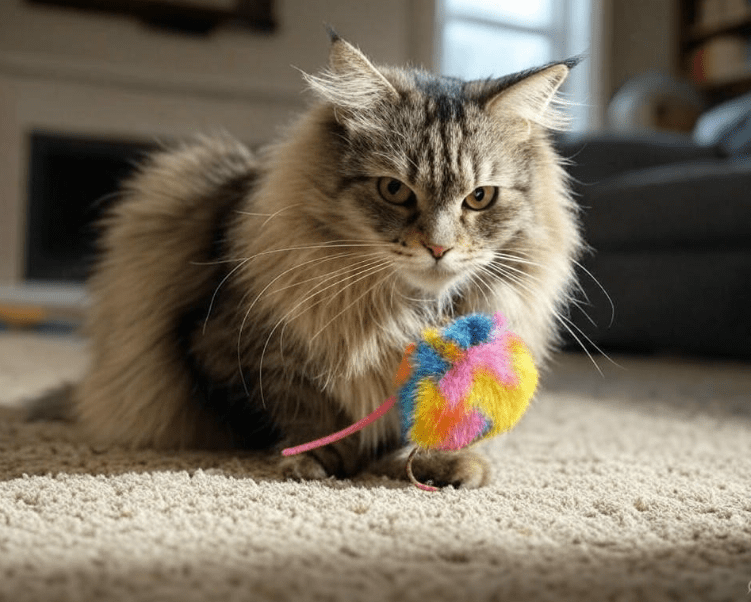
Prevention is key to maintaining your Maine Coon’s skin and coat health. Incorporate these habits into your routine:
Regular Vet Checkups: Schedule annual or biannual vet visits to catch potential issues early.
Consistent Grooming Schedule: Stick to a grooming routine to prevent oil buildup and matting.
Monitor for Changes: Watch for changes in your cat’s skin, coat, or behavior, as these may indicate emerging issues.
Use Cat-Safe Products: Avoid human shampoos or products with harsh chemicals, as they can irritate your cat’s skin.
Common Mistakes to Avoid
When managing Maine Coon dandruff, steer clear of these pitfalls:
Overbathing: Excessive bathing strips natural oils, worsening dryness.
Using Human Products: Human shampoos or lotions are too harsh for feline skin.
Ignoring Symptoms: Untreated dandruff can lead to infections or chronic skin issues.
Skipping Vet Care: Home remedies may not address underlying medical conditions.
When to Seek Immediate Veterinary Attention
While most cases of Maine Coon dandruff are manageable, certain symptoms warrant urgent care:
Open Sores or Bleeding: Indicates severe irritation or infection.
Hair Loss in Patches: May suggest ringworm or other serious conditions.
Lethargy or Appetite Loss: Could signal systemic issues affecting the skin.
Persistent Scratching: May lead to self-inflicted injuries or infections.
Conclusion
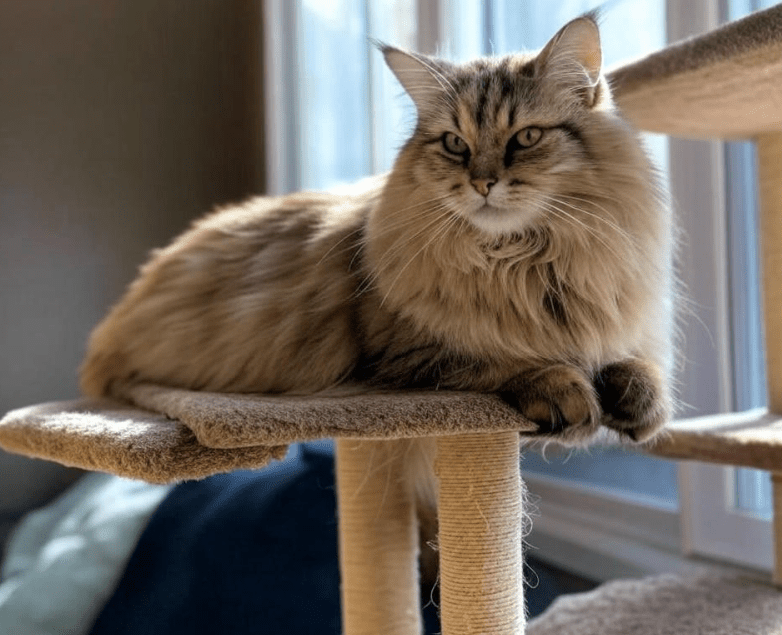
Managing Maine Coon dandruff and dry skin requires a holistic approach that combines proper grooming, a balanced diet, environmental adjustments, and veterinary care when needed. By understanding the causes and implementing the strategies outlined in this guide, you can help your Maine Coon maintain a healthy, flake-free coat and comfortable skin. Regular care and attention to your cat’s unique needs will ensure they thrive, showcasing the stunning beauty that makes Maine Coons so special. If dandruff persists or worsens, don’t hesitate to seek professional veterinary advice to keep your feline friend in top condition.

